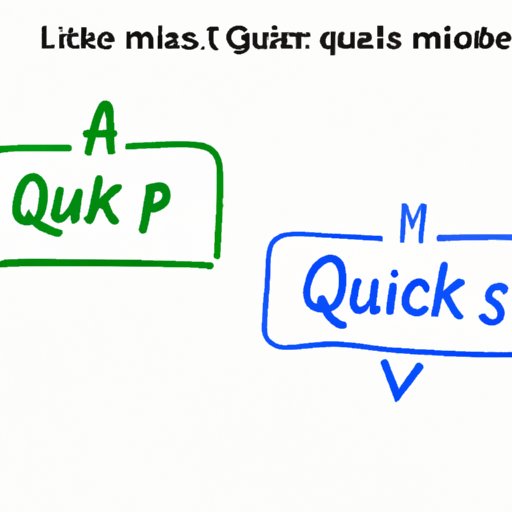Introduction
Have you ever found yourself recipe hunting online and come across a fluid volume measurement in mL, but aren’t quite sure how to convert it to oz? Or perhaps your favorite recipe requires 1 oz of a fluid ingredient, but all you have on hand is a measuring cup in mL. Don’t worry, you’re not alone! Many people struggle with converting between milliliters (mL) and fluid ounces (oz), especially when it comes to cooking and baking. In this article, we’ll explore the metric and imperial systems of measurement, provide a step-by-step guide to converting between mL and oz, and share tips for measuring accurately in the kitchen.
Metric vs. Imperial: Understanding How Many mL in 1 oz
To understand how many mL are in 1 oz, we first need to understand the metric and imperial systems of measurement. The metric system is a decimal-based system that uses units like meters, grams, and liters to measure length, weight, and volume, respectively. The imperial system, on the other hand, is a system of measurement commonly used in the United States and other countries, which uses units like inches, pounds, and fluid ounces to measure length, weight, and volume.
When it comes to measuring fluid volume, mL is the unit used in the metric system, while oz is used in the imperial system. Both measurements are used to measure fluid volume, but they represent different amounts. One fluid ounce is equal to approximately 29.5735 mL. It’s important to note that fluid ounces are not the same as weight ounces, which are used to measure dry ingredients.
Converting Units: A Simple Guide to mL and Ounces
Converting between mL and oz is a simple process that anyone can do with a little bit of math. Here’s a step-by-step guide to converting mL to oz or oz to mL:
Converting mL to oz:
1. Divide the number of mL by 29.5735 to get the equivalent number of oz.
2. Round the answer to two decimal places.
Converting oz to mL:
1. Multiply the number of oz by 29.5735 to get the equivalent number of mL.
2. Round the answer to the nearest whole number.
Let’s take a look at some examples:
Example 1: Convert 500 mL to oz
1. Divide 500 by 29.5735 = 16.907 oz
2. Round to two decimal places = 16.91 oz
Example 2: Convert 8 oz to mL
1. Multiply 8 by 29.5735 = 236.588 mL
2. Round to the nearest whole number = 237 mL
Remember to always double check your math to ensure accuracy in your measurements.
From Fluid Ounces to Milliliters: The Ultimate Conversion Chart
While converting between mL and oz can often be done with a calculator, it’s always helpful to have a conversion chart on hand for quick reference. Here’s a handy chart showing common measurements in oz and mL:
| Fluid Ounce (oz) | Milliliters (mL) |
|---|---|
| ¼ oz | 7.39 mL |
| ½ oz | 14.79 mL |
| 1 oz | 29.57 mL |
| 2 oz | 59.15 mL |
| 4 oz | 118.30 mL |
| 8 oz | 236.59 mL |
| 16 oz | 473.18 mL |
| 32 oz | 946.35 mL |
This chart includes the most commonly used measurements in cooking and baking. Keep in mind that some recipes may require more precise measurements, so always refer to the recipe for guidance. When using the chart, be sure to double check your conversions to ensure accuracy.
Essential Kitchen Knowledge: How to Measure mL and Ounces
Measuring ingredients accurately is essential for any successful cooking or baking project. Here’s an overview of the different tools commonly used for measuring fluid volume:
Measuring Cups: Measuring cups are used for both liquids and dry ingredients. They come in a variety of sizes and are typically made of glass or plastic. To use a measuring cup, simply fill it to the appropriate line with the liquid or dry ingredient you’re measuring. Be sure to hold the measuring cup level to ensure accuracy.
Measuring Spoons: Measuring spoons are used for small amounts of fluid ingredients, such as vanilla extract or lemon juice. They typically come in sets and are made of metal or plastic. To use measuring spoons, fill them to the appropriate line with the ingredient you’re measuring. Again, be sure to hold the spoon level to ensure accuracy.
Why Knowing How Many mL is 1 oz Matters in Cooking and Baking
When it comes to cooking and baking, accuracy in measurement can make all the difference in the outcome of your dish. For example, using too much or too little liquid can affect the texture and taste of your final product. Many recipes also require precise measurements when it comes to adding certain ingredients, such as yeast or baking powder.
Knowing how to convert between mL and oz can also be helpful when working with international recipes. Recipes from different countries may use different systems of measurement, and knowing how to convert between different units of measurement can make it easier to follow the recipe.
The Science of Measuring: The Relationship between mL and Ounces
Ounces and mL are unique units for measuring fluid volume because they represent the amount of space a liquid takes up in a container. In physics and chemistry, mL is commonly used over oz because it is a smaller, more precise unit of measurement. However, oz is still used in many contexts because it is a more familiar unit of measurement in the United States and other countries using the imperial system.

Quick Tips: How to Convert mL to Ounces and Vice Versa
Here are some quick and easy tips for converting between mL and oz:
To convert mL to oz:
– Divide the number of mL by 29.5735
– Round the answer to two decimal places
To convert oz to mL:
– Multiply the number of oz by 29.5735
– Round the answer to the nearest whole number
Conclusion
In conclusion, knowing how many mL are in one oz is an essential skill for anyone working in the kitchen. By understanding the metric and imperial systems of measurement, using simple math to convert between units, and using accurate measuring tools, you can ensure the success of your cooking and baking adventures. Remember to always double check your conversions and refer to the recipe for guidance when needed. With these tips and tricks in mind, you’ll be well on your way to culinary success.
